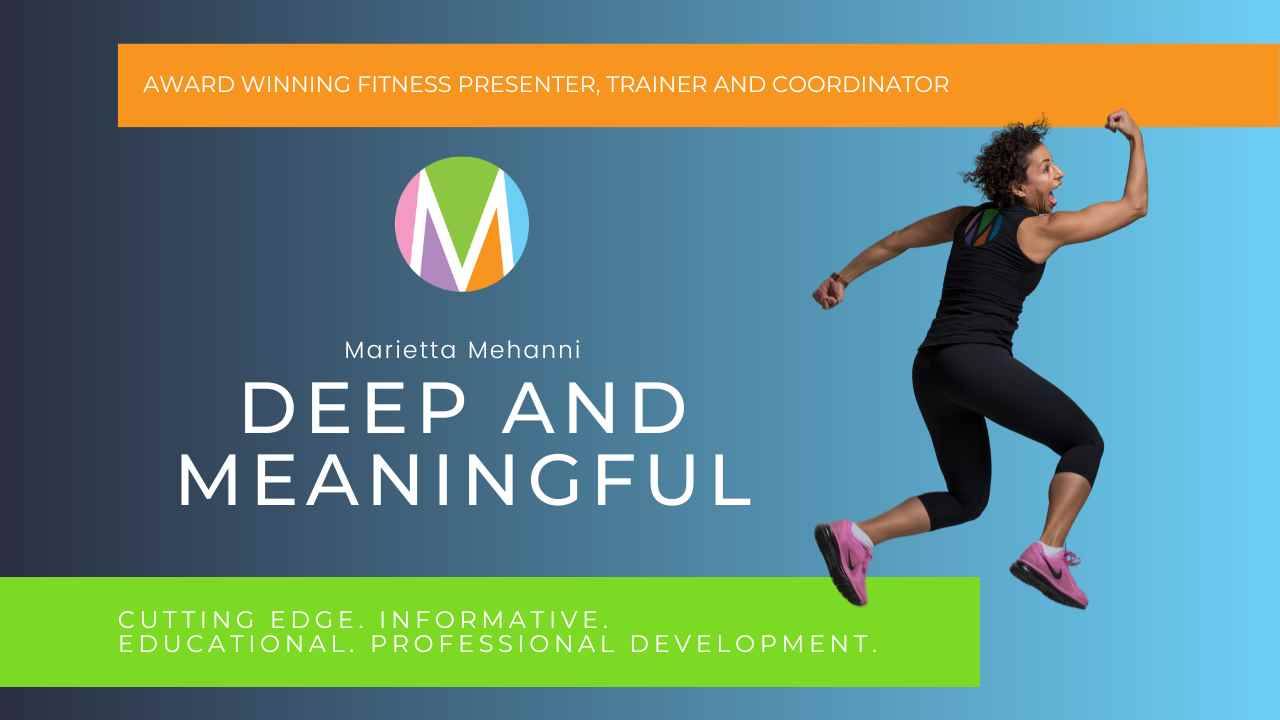Co written with Clare Patmore
Our mission was to look at conventional deep water sessions and explore the movement possibilities for a range of reasons.
- Originally we had tried deep water running classes. Our cliental didn’t really enjoy the drills, sprints and discipline of performing one activity for a period of time. They wanted variety!
- Functionally, movement in only one plane did not allow for development or exploration of a range of movement patterns.
- Finding a way to incorporate further resistance training with dumbbells as an option for the fitter participants or those who wanted to challenge their strength.
Our aims were:
- To provide a variety of ideas and concepts for deep water classes
- To give regular aqua participants an opportunity to challenge their cardiovascular fitness and muscle endurance
- To motivate participants by utilizing music and the concept of ‘movement to music’
- To create choreography that is as effect as drills or sprints to elevate heart rate
Deep = Depth
Meaningful = Exercise selection, Music choice and Choreography
Exercise Selection
Traditionally, exercising in deep water involves running, which would include sprints and interval drills, cross country skis, jacks and variations of those base moves. To achieve our aims and goals for this class, we needed to think ‘outside the square’ for exercises and moves. Having taught choreographed classes, we decided use ideas from shallow water choreography and see if it would be effective in deeper water. Some exercises just didn’t work eg; pendulum and rocking horse, and moves that required the pool floor to stabilize the movement but overall, we were surprised with what could be achieved. Deep water running did not appeal to our population group as they required more variety. We also questioned the functionality of the limited movement pattern and joint mobility – we don’t just move forwards.
Deep Water Buoyancy Belts
Oddly enough, one of our greatest challenges was educating participants on how to fit the belts. Most of the clients had not used a belt before nor had they experienced a deep water workout. What we discovered was that we needed to spend time with them prior to the class showing how the belts were to be worn and how to adjust the belts during the class.
Teaching Cues
Teaching participants in a completely suspended environment is very different from shallow water classes. When someone first comes to a shallow water aqua session, they learn the concept of what their body feels like to be buoyant and having to work against resistance and turbulence, but gravity still plays a small role as they are able to push off from the bottom of the pool. When they are completely suspended, this is a totally new experience and they require more time to develop an appreciation of their body awareness and how it will move in this environment. More verbal cues and imagery was required to assistance participants to effectively perform the appropriate movement pattern.
Using familiar moves (from shallow water) in the deep water was effective in teaching fitter participants movement patterns, and it also added the challenge of not stabilizing on the bottom, focusing more on posture.
Straight leg criss cross
- Start with feet astride and legs extended and strong. Arms pushing dumbbells into the water at thigh level. Fingers can be relaxed and the dumbbells being held by pushing down against buoyancy.
- Cross legs over and alternate the crossing legs each repetition. Try to encourage participants to push hard as they cross over. Arms move in the opposite direction to legs to maintainbalance – Right arm in front when left leg crosses in front. Dumbbells must point inwards to avoid unnecessary rotation in the shoulder.
Dumbbell Jack Jump
- Startwith feet together and arms pushing dumbbells in the water. Fingers relaxed
- Bring knees to chest and lift elbows high
- Extend legs out and push dumbbells out and down. Repeat the movement by brining knees to chest again and extending legs straight down into the water. The exercise needs to be performed energetically; otherwise the head will bop down below water level.
Cross Kick (Latin Combo)
- Lift right knee and cross leg over in strong pushing action. Both arms sweep across chest in the opposite direction with the same amount of force. The left leg hangs straight down and assist with balancing out the movement pattern
- Lift the right knee and extend the leg high to the side. The torso will drop to the side as the arms scoop the water to the opposite side. The left leg stays still
- Bring the right knee in and push the leg across behind the body. At the same time extend the arms across the body in the opposite direction with an cupping action of the fingers. Allow the body to tilt to the side slightly. Repeat the movement pattern by taking the leg to the side again and then pushing forward. Strong emphasis on posture and relaxing the left leg, so that it acts as an anchor for the exercise.
Kick Combo
- Lift knee to chest and kick to front, push both arms forward
- Bring knee to chest and recoil arms back
- Forcefully extend arms to side and kick in the opposite direction
- Bring knee to chest and recoil arms back
- Kick behind the body with arms pushing forward
- Pull knee into chest and kick to the front with arms pulling back behind the body. Repeat the exercise on the other leg. It is important to note that the knee must pull into the body each time it is changing direction otherwise the participant will constantly be losing balance and also recruit lower back muscles to complete the action


0 Comments